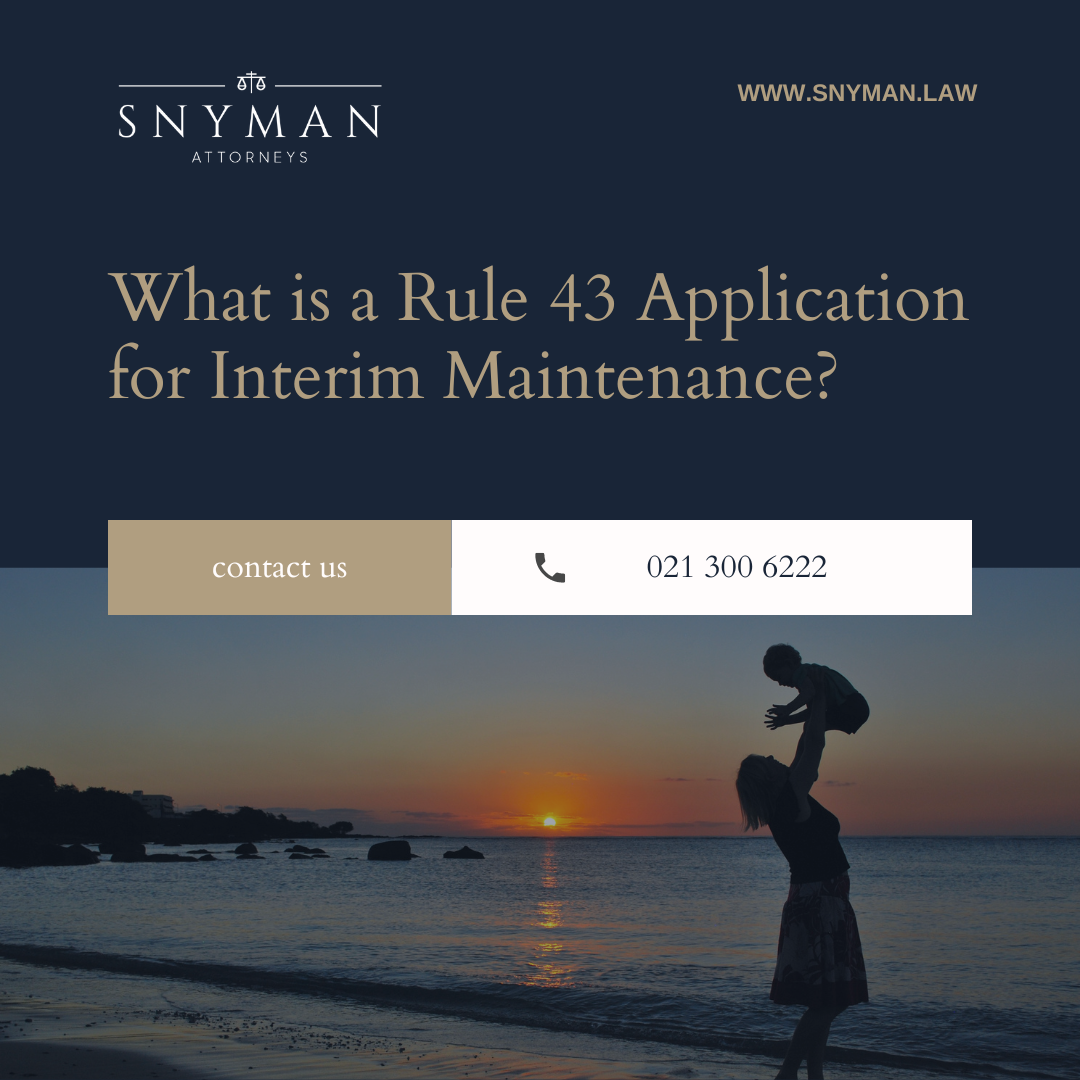What is a Rule 43 Application for Interim Maintenance?
Introduction
When spouses decide to divorce, they may face various challenges, such as how to maintain themselves and their children during the divorce process, how to share custody and access to their children, and how to pay for the legal costs of the divorce. These issues can be contentious and time-consuming, especially if the divorce is contested and involves complex disputes over assets, income, debts, etc.
Fortunately, there is a legal mechanism in South Africa that can provide some relief to spouses who need urgent interim orders on these matters pending the finalisation of their divorce. This mechanism is called a Rule 43 application (or a Rule 58 application in the regional courts).
What is a Rule 43 application?
A Rule 43 application is an application that can be made by either spouse in a pending matrimonial action (i.e., a divorce) to seek one or more of the following orders from the court:
Maintenance pendente lite: This means interim maintenance for themselves or their minor children until the divorce is finalised. The purpose of this order is to ensure that both spouses and their children are adequately supported during the divorce process and do not suffer undue hardship or prejudice.
A contribution towards legal costs: This means an order that one spouse pays a portion of the other spouse's legal fees for the divorce proceedings. The purpose of this order is to enable both spouses to have access to legal representation and a fair trial.
Interim custody of any child: This means an order that grants one spouse temporary primary care and control over their minor child or children until the divorce is finalised. The purpose of this order is to protect the best interests of the child or children and ensure their stability and well-being.
Interim access to any child: This means an order that grants one spouse temporary contact rights with their minor child or children until the divorce is finalised. The purpose of this order is to preserve and promote the relationship between the parent and child or children.
A Rule 43 application can be filed before issuing a summons, together with issuing a summons, or after receiving a notice to defend a summons.
How does a Rule 43 application work?
A Rule 43 application must be made by way of an affidavit (a sworn written statement) setting out:
The relief claimed (i.e., what orders are sought)
The grounds for claiming such relief (i.e., why such orders are necessary)
The financial means of both parties (i.e., their income, expenses, assets, liabilities, etc.)
The affidavit must be concise and factual, without unnecessary details or annexures. It must also be supported by documentary evidence where possible (e.g., bank statements, payslips, invoices, etc.).
The applicant must lodge their affidavit at the court and serve it on the respondent (the other spouse). The respondent then has ten days to file an answering affidavit setting out the following:
Whether they admit or deny any allegations made by the applicant.
Whether they oppose any relief claimed by the applicant.
Whether they counterclaim any relief from the applicant.
The respondent's answering affidavit must also be concise and factual, without unnecessary details or annexures. It must also be supported by documentary evidence where possible.
Once all affidavits have been filed, the matter will be set down for a hearing before
a judge who will consider:
The affidavits and evidence submitted by both parties
The oral arguments presented by both parties' attorneys or advocates (if represented)
The relevant law and case law applicable
The judge will then make an interim order granting or refusing some or all of
the relief claimed by either party. The interim order will remain in force until
it is varied or rescinded or until the divorce matter is finalised.
What factors does a court consider in a Rule 43 application?
In deciding whether to grant or refuse any relief claimed in a Rule 43 application, a court will consider various factors depending on the nature of the relief sought.
For maintenance pendente lite, a court will consider:
The needs of both parties and their minor children
The standard of living enjoyed by both parties before the separation

